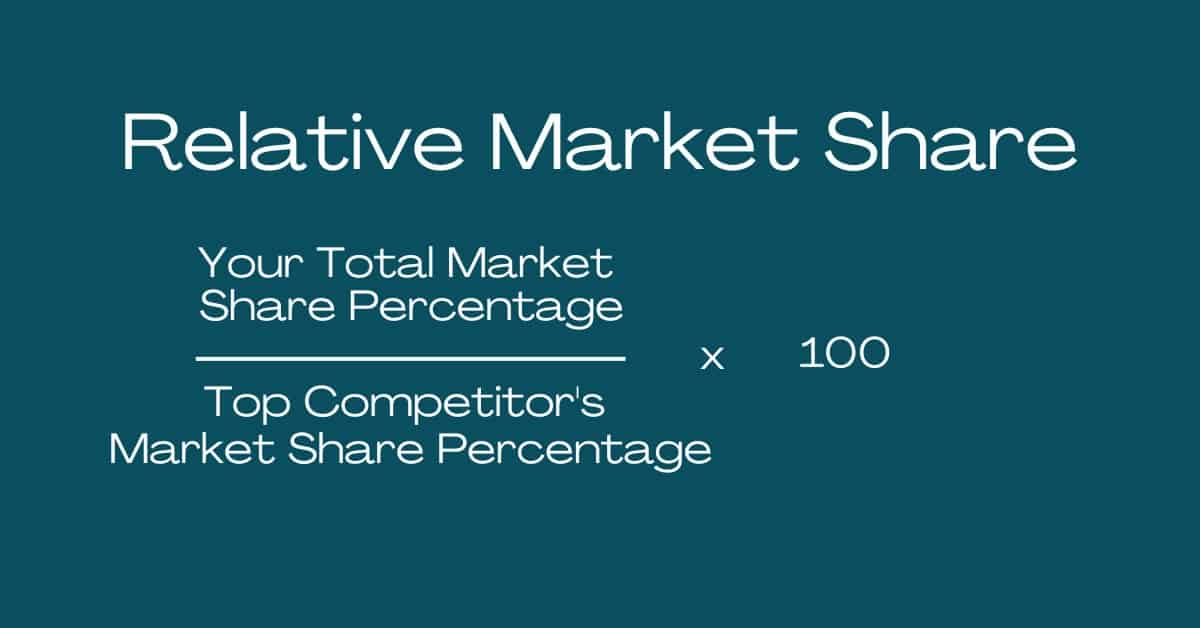Market share is a critical metric that can give you insights into how your business is doing compared to the competition. This definitive guide will walk you through the steps and show you how to interpret the results. Investors often look at changes in market share as a sign of competitiveness, so it’s essential that you understand this metric inside and out.
Why Look at Your Market Share?
Market share shows how much your company is making in relation to what your industry makes. This proportional number helps you see how much of the industry’s revenue is from your business.
For a market share example, let’s say you own the bakery Too Yummy in Longwood, FL. You may wonder how your business is doing compared to other city bakeries. Your particular company, Too Yummy, has an annual revenue of $100,000 per year.
You want to know the industry’s total sales for the entire bakery market in Longwood for the past year.
So you look up the company’s sales for the other 2 bakeries in the city using a free University of SC library online. You can then see that Bob’s Bakery makes $300,000 per year, and Terrific Tortes makes $250,000 per year.
Now that you know how much the other companies make, you can calculate your industry’s total revenue in Longwood for the past year. The three bakeries in Longwood (including yours) made $650,000 in the past year.
Using the Market Share Formula
The market share formula helps you measure your market share during that same year. Market share data needs to come from the same source and the same period of time.
Determine market share using this simple formula:
So using our example above, calculate your market share:
Your bakery’s total revenue (100,000) divided by the entire industry total revenue (650,000) = .15
Now multiply by 100 or just move your decimal to the right 2 spaces, and you have your market share at 15% of the total.
Now that you know how much of the market share is yours in Longwood, you know how you are doing compared to your direct competitors.
Now it’s your turn to calculate the data. Let’s go step by step.
Step 1: Determine Your Company’s Total Revenue
To calculate your market share, you will first need to find out how much revenue your business generates. You can do this by looking at your financial statements and your company’s total sales.
Finding your total revenue is not difficult. It is your gross income from sales of products or services over a time period. An easy way to get a rough estimate of your company’s total units sold is with the Revenue formula:
A company’s revenue is it’s Company Sales x Average Price of Service or Sales Price
Step 2: Find Your Industry’s Total Sales
To find the total sales revenue of your industry, you will need to do some research. You can look up data from the US Department of Commerce, or use a free online library like the University of SC.
Keep in mind that you want the total sales for your industry, not just your competitors. Total sales include businesses in your selected area in the same category as yours.
For example, if you own a furniture store, you should include all the other furniture stores in your chosen area in your industry. This helps you get an accurate picture of how your business is doing compared to the rest of the market.
Step 3: Calculate Your Company’s Market Share
Now that you have your company’s total sales and your industry’s total sales, it’s time to calculate your market share.
Once you have the data, measure your market share. Divide it by the total industry revenue for that period of time. This is an easy way to determine what percentage of the industry’s revenue comes from your business.
Step 4: Compare Your Market Share To Other Competitors
Now that you know your market share, you can compare it to other competitors in the industry. This gives you a better understanding of where you stand in relation to them and if they are gaining ground on you.
You can also use this comparison to determine which areas of your business need to improve to gain a larger share of the industry.
Step 5: Analyze Your Results
Once you have calculated and compared your market share, it’s time to analyze the results. Look for any trends or changes that might indicate if your company is gaining or losing ground in relation to competitors.
Decreasing Market Share
Let’s say you measure your existing market share each year for 5 years. If the entire market or total industry sales increases by 10% each year, but your sales decrease over that same time, your business is not growing! You’re losing market share. Your revenue market share is decreasing!
You may use this knowledge to work on capturing market share. You may focus on customer relationships or do market research to find out what the preferred brand is doing. Or you might simply lower prices or create a customer loyalty program to bring in potential customers.
Increasing Market Share
If your percentage of the market share increases each year, you are gaining market share. Industry leaders work to stay a market leader by looking at their total market sales over time. Market leaders also stay on top of market share calculations to create higher profit margins and bring in new customers.
If you find significant changes over time, this could mean that you are doing something right or wrong in terms of your marketing strategy. Make sure to take a close look at what’s happening so you can adjust as needed!
Other Ways to Calculate Market Share
Relative Market Share
Relative market share is an important metric to measure when assessing a company’s performance in the marketplace. It helps to compare the company’s sales relative to one competitor instead of a whole group of companies.
Relative Market Share Formula:

Relative market share is a useful tool for businesses to understand how competitive their current position is compared to another particular company. It can also help “you decide your marketing strategy. For example – If you hold the majority market share as compared to competitors, then your strategies should focus more on customer retention so that you do not lose the market share.” (1)
Using Your Company’s Market Share Data
Calculating market share is important in understanding how well your business is doing compared to other competitors in the industry.
Market share and relative market share can help you see how you rank in your respective industry and your particular geographic area. It may also help you identify areas where you are gaining ground against all the companies in your area. You may also see areas where you need improvement to gain more customers and increase profits over time.
With proper analysis, a successful business can use this data to adjust their company’s competitiveness and maximize success to become an industry leader.
Our Experienced Business Attorneys Can Help
At Hopler, Wilms, and Hanna, we can help your North Carolina business in generating revenue to gain a competitive advantage in your specific industry.
Our current clients include larger companies across the state with growth trajectories in their given industry. Whether you’re a publicly traded company or a small business just starting out, our knowledgeable business law attorneys can help you develop strategies to capture and maintain your market share.
If you’re looking for legal assistance in the North Carolina area, don’t hesitate to contact us today and learn more about how we can help you. We look forward to hearing from you!

